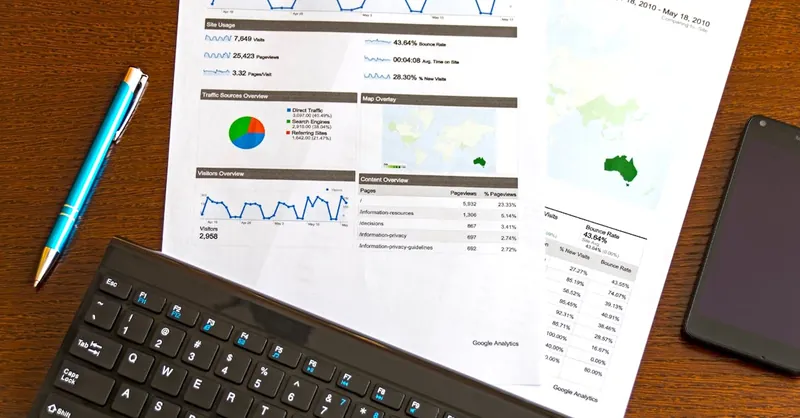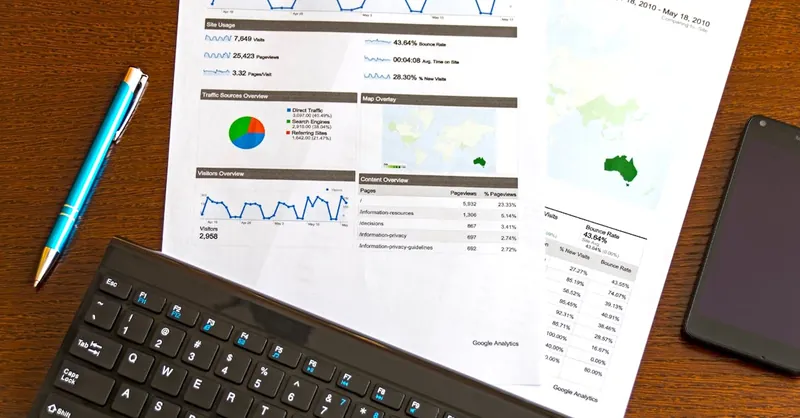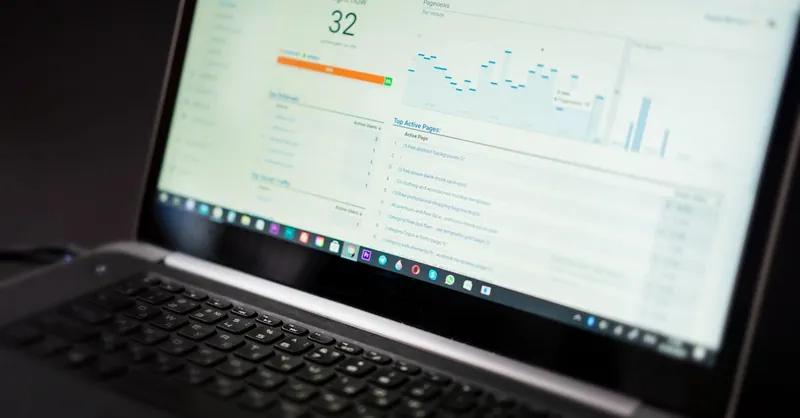Build SaaS for Passive Income: A Programmer’s Guide
Category: Programming
Unlock the Power of SaaS for Passive Income
If you're a tech-savvy programmer looking to leverage your coding skills into a reliable passive income stream, you've landed in the right place. Building Software-as-a-Service (SaaS) products is one of the most promising ways to generate ongoing revenue without trading your time endlessly. But how do you transition from coding side projects or freelance gigs into launching a SaaS that's not only viable but scalable and mostly hands-off?
You’ve likely tried or considered many programming projects and perhaps even dabbled with monetization methods that demand constant attention or lack growth potential. This post is tailored to guide you through creating a SaaS solution designed for passive income, focusing on the strategic steps that successful developers take—from idea validation to automation and scaling—without getting overwhelmed by the technical and business pitfalls.
Unlike generic guides, here you’ll find a clear, practical framework aimed at programmers eager to build SaaS platforms that generate recurring revenue while minimizing maintenance headaches. Read on to uncover key tactics on picking the right niche, leveraging cloud infrastructure, automating user onboarding and billing, and more. This is your roadmap to turning code into consistent cash flow.
- Unlock the Power of SaaS for Passive Income
- Identifying Profitable SaaS Ideas for Passive Income
- Planning and Designing Your SaaS Product
- Tech Stack Selection and Architecture for Maintenance-Friendly SaaS
- Building Efficient User Onboarding and Self-Service Features
- Automating Billing, Subscription Management, and Customer Support
- Implementing Continuous Deployment and Monitoring for a Maintenance-Free SaaS
- Growth Strategies Tailored for SaaS Passive Income
- Common Pitfalls and How to Avoid Them
- Scaling and When to Outsource Maintenance
- Measuring Success and Iterating for Long-Term Revenue Stability
Identifying Profitable SaaS Ideas for Passive Income
Finding the right SaaS niche is critical to building a successful passive income stream. The goal is to identify markets with strong demand and low competition, where your solution addresses real pain points that users are eager to solve. Begin by exploring underserved or niche industries where existing solutions are either too complex, too expensive, or nonexistent. This targeted approach improves your chances of standing out without needing massive marketing budgets.
Validate Pain Points Through Market Research
To validate a SaaS idea, start by engaging directly with your potential users using methods such as:
- Surveys and Polls – Use platforms like Typeform or Google Forms to gather data about challenges, workflows, and software gaps.
- Online Communities – Investigate forums, Reddit threads, and social media groups in your chosen domain to discover frequent complaints and feature requests.
- Competitor Analysis – Analyze current SaaS providers to pinpoint their weaknesses or missing features that frustrate customers.
Effective Market Research Techniques for Programmers
As a programmer, you can leverage your technical skills to perform deeper market analysis by:
- Keyword Research: Utilize SEO tools like Ahrefs, SEMrush, or Google Keyword Planner to identify high-volume keywords with moderate competition related to your niche. This helps in uncovering what potential users are actively searching for.
- Analyzing App Marketplaces: Explore SaaS listings on platforms like Product Hunt or SaaSworthy to observe trending solutions and gather insights on user feedback and feature gaps.
- Minimum Viable Product (MVP) Testing: Develop a lightweight prototype or landing page describing your SaaS idea to collect early signups and gauge interest before fully committing to development.
By combining qualitative insights with quantitative data, you can confidently select a SaaS idea that not only suits your expertise but also promises sustainable passive income by solving genuine problems in a niche market.

Image courtesy of Christina Morillo
Planning and Designing Your SaaS Product
Once you've validated your SaaS idea with solid market research, the next crucial step is to plan and design your product meticulously. This phase sets the foundation for a scalable, user-friendly solution that can generate passive income without demanding constant firefighting.
Essential Features vs. Nice-to-Haves
A common pitfall in SaaS development is overloading the initial product with too many features. To avoid scope creep and accelerate your time-to-market, focus on identifying the core features that directly solve the primary pain points of your target users. These essential features form your Minimum Viable Product (MVP), which allows you to:
- Launch quickly and begin gathering real user feedback.
- Validate assumptions about user needs without investing heavily upfront.
- Iterate effectively based on actual usage data rather than guesswork.
Things like advanced reporting, integrations, or customizations often fall into the nice-to-have category and can be introduced in later versions as your user base grows. Prioritize simplicity and clarity in your feature set, enabling users to experience immediate value with minimal friction.
Designing for Scalability
Building a SaaS product with scaling in mind from day one will save you headaches and costly refactoring down the line. Consider these key scalability principles:
- Modular Architecture: Structure your codebase to isolate key components, making future feature additions and updates manageable.
- Cloud-Native Infrastructure: Utilize cloud services like AWS, Azure, or Google Cloud which offer flexible scaling, automated backups, and managed databases, helping your app handle growing user loads smoothly.
- Efficient Data Management: Plan your database schema and indexing to support quick query responses as data volumes increase.
- Automated Workflows: Implement automated onboarding, billing, and customer support systems early to reduce manual intervention and support passive revenue growth.
MVP Strategies for Rapid Market Entry
Employing the MVP approach accelerates your SaaS launch and market validation while minimizing sunk costs. Key tactics include:
- Build Only What’s Necessary: Focus on delivering the solution’s core value proposition instead of a full-featured product.
- Leverage Existing Tools: Use no-code or low-code platforms, pre-built authentication, and payment processing services to speed up development.
- Engage Early Adopters: Release your MVP to a select group of users who can provide constructive feedback, helping you refine the product before a full-scale launch.
- Continuous Monitoring: Track user behavior and engagement metrics rigorously to identify what works and what needs improvement.
By carefully balancing essential features with future scalability and adopting an MVP mindset, you position your SaaS for rapid market entry and sustainable passive income growth. With a clear product design and an efficient development strategy, you’ll minimize risk and set the stage for a thriving subscription-based business.

Image courtesy of Christina Morillo
Tech Stack Selection and Architecture for Maintenance-Friendly SaaS
Choosing the right tech stack and architecture is a cornerstone for building a SaaS product that not only scales efficiently but also minimizes ongoing maintenance. When your goal is passive income, every minute saved on debugging, updating, and scaling translates into more time and resources to focus on growth or new projects. To achieve this, prioritize tech components that are cost-effective, widely supported, and designed for scalability.
Key Considerations When Selecting Your SaaS Tech Stack
-
Cloud Platforms: Opt for cloud providers such as AWS, Google Cloud Platform (GCP), or Microsoft Azure, which offer flexible pay-as-you-go pricing and seamless scalability. Services like managed Kubernetes, serverless functions, and container orchestration simplify scaling and reduce operational overhead. Starting with managed services (e.g., AWS Lambda, Google Firebase) can drastically cut setup time and technical debt.
-
Frameworks and Languages: Choose mature and popular frameworks like React, Vue.js, or Angular for front-end, combined with robust back-end frameworks such as Node.js with Express, Django, or Ruby on Rails. These ecosystems have vast community support, extensive libraries, and integrations, making feature implementation and troubleshooting faster and more reliable.
-
Databases: Select databases that match your SaaS’s data needs while ensuring easy scaling and maintenance. For most SaaS applications, managed relational databases like Amazon RDS (PostgreSQL/MySQL) or Cloud SQL are excellent for transactional integrity and SQL querying. When designing for flexible schemas or high write/read volumes, consider NoSQL options such as MongoDB Atlas or DynamoDB.
-
APIs and Integrations: Rely on well-documented and stable third-party APIs for payments (Stripe, PayPal), authentication (Auth0, Firebase Authentication), and analytics (Google Analytics, Mixpanel). Outsourcing these components saves months of development and ongoing troubleshooting, allowing your team to focus on core SaaS features.
Designing for Maintainability and Future Updates
- Modular and Decoupled Architecture: Build your SaaS with clear separation of concerns—front-end, back-end, and data layers. This modularity eases iterative updates and debugging without affecting unrelated components.
- Automated Testing and CI/CD Pipelines: Establish continuous integration and delivery pipelines that run automated tests on every code change. This practice substantially reduces bugs reaching production and simplifies seamless feature rollouts.
- Infrastructure as Code (IaC): Use tools like Terraform or AWS CloudFormation to script your cloud infrastructure deployment. IaC ensures consistent environments across development, staging, and production, improving reliability while reducing manual configuration errors.
- Monitoring and Logging: Implement comprehensive monitoring (e.g., AWS CloudWatch, Datadog) and centralized logging (e.g., ELK Stack) from the start. Real-time visibility into application health helps preempt issues that could otherwise derail a passive income stream.
By investing upfront in a scalable, maintainable, and well-supported tech stack, you position your SaaS product to grow steadily without high technical debt. This strategic approach enables you to automate updates, reduce downtime, and confidently expand your user base—all critical for maximizing passive income potential through SaaS.

Image courtesy of Markus Winkler
Building Efficient User Onboarding and Self-Service Features
A frictionless user onboarding experience is vital for SaaS products aiming for passive income generation. Intuitive onboarding flows reduce user confusion, accelerate time-to-value, and significantly improve retention rates—minimizing the need for time-consuming manual support. By designing onboarding that guides users step-by-step, your SaaS can convert trial users into loyal customers with minimal intervention, freeing you up to focus on product growth.
Designing Intuitive Onboarding Flows
To create efficient onboarding, focus on:
- Progressive Disclosure: Introduce features gradually rather than all at once to prevent overwhelming new users. This approach keeps onboarding manageable and encourages continuous engagement.
- Interactive Walkthroughs and Tooltips: Use in-app tutorials, onboarding checklists, or guided tours to help users understand features contextually within the app.
- Personalization: Tailor onboarding paths based on user roles or use cases, ensuring that the content delivered matches their goals and maximizes relevance.
- Clear Success Milestones: Highlight achievable goals users can reach quickly to instill confidence and motivate continued usage.
Empowering Users with Self-Service Resources
Automating support through comprehensive self-help reduces your support workload and enhances user satisfaction. Essential self-service strategies include:
- Knowledge Bases and FAQs: Create searchable documentation covering common questions, troubleshooting steps, and feature guides.
- Video Tutorials and Webinars: Offer short, focused video content demonstrating key workflows to accommodate different learning styles.
- Community Forums or Chatbots: Enable peer-to-peer support or AI-driven FAQs that provide instant assistance without human intervention.
- In-App Support Widgets: Embed tools that let users find answers or contact support effortlessly without leaving the app.
By investing in automated onboarding and rich self-service capabilities, your SaaS platform becomes more scalable, driving higher user retention with less manual effort. This user-centric design approach is crucial for maintaining a passive income model, as it minimizes churn and support overhead while cultivating a loyal customer base.

Image courtesy of Mikhail Nilov
Automating Billing, Subscription Management, and Customer Support
For a SaaS product aimed at passive income generation, automating recurring billing, subscription management, and customer support is non-negotiable. Manual handling of payments and user inquiries quickly becomes unsustainable and detracts from the true goal: building a scalable, low-maintenance revenue stream. Leveraging reliable payment gateways and automation tools not only secures consistent cash flow but also enhances the user experience by providing seamless transactions and instant issue resolution.
Streamlining Recurring Payments and Subscription Handling
Integrating robust payment gateways such as Stripe, PayPal, or Braintree is crucial for handling recurring billing efficiently. These platforms offer built-in features to:
- Process recurring payments securely with PCI compliance out-of-the-box.
- Manage subscription plans with options for trials, upgrades, downgrades, and cancellations via API.
- Automate invoicing and tax calculations, reducing errors and manual accounting.
- Handle payment failures gracefully with automated retries and user notifications.
By embedding these systems into your SaaS backend, you eliminate the need for manual billing oversight, reduce churn due to payment issues, and support diverse pricing strategies—key for maximizing lifetime customer value.
Enhancing Customer Support with AI and Automation
Efficient customer support automation ensures your SaaS users receive instant help without the need for a dedicated support team constantly on call. Incorporate AI-powered chatbots and helpdesk automation tools like Intercom, Zendesk, or Freshdesk which provide:
- 24/7 instant responses to common queries through conversational AI.
- Smart ticket routing and prioritization, ensuring urgent issues escalate promptly.
- Self-service via AI-driven FAQs and knowledge base suggestions embedded inside the chatbot flow.
- Integration with CRM systems to maintain detailed customer interaction histories, improving personalized support over time.
These AI-driven solutions reduce human intervention, decrease response times, and keep users engaged with minimal effort—a critical advantage when your business model relies on passive income.
By combining automated billing systems with intelligent customer support tools, your SaaS product not only secures predictable revenue but also scales support efficiently. This powerful blend of automation helps maintain high user satisfaction and retention while freeing you to focus on growth and feature innovation rather than day-to-day operations.

Image courtesy of MART PRODUCTION
Implementing Continuous Deployment and Monitoring for a Maintenance-Free SaaS
To build a truly passive income SaaS, deploying new features seamlessly and maintaining stable uptime with minimal manual intervention is essential. Implementing Continuous Integration and Continuous Deployment (CI/CD) pipelines, combined with comprehensive automated testing and real-time monitoring tools, empowers you to proactively fix bugs, avoid downtime, and ensure a smooth user experience—all while reducing operational overhead.
Setting Up CI/CD Pipelines for Effortless Deployment
A robust CI/CD pipeline automates the entire software delivery process—from code commits to production release—allowing you to:
- Run automated tests on every code change to detect defects early and prevent regressions.
- Deploy new features or hotfixes safely and frequently, reducing the risk of large, error-prone releases.
- Automate rollback mechanisms to quickly revert problematic updates, minimizing user impact.
- Enable infrastructure provisioning and updates alongside application code through Infrastructure as Code (IaC) tools.
Popular CI/CD platforms such as GitHub Actions, GitLab CI, Jenkins, and CircleCI integrate seamlessly with cloud providers, offering customizable workflows that suit SaaS development workflows. By automating deployment pipelines, you reduce manual steps and mitigate downtime risks—both critical for maintaining a stable passive income stream.
Leveraging Automated Testing to Ensure Quality and Reliability
Automated testing forms the backbone of a passive SaaS maintenance strategy. Focus on building a test suite covering:
- Unit Tests: Validate individual components or functions for expected behavior.
- Integration Tests: Ensure different modules or services interact correctly.
- End-to-End Tests: Simulate user flows to verify critical business processes.
- Performance Tests: Monitor application responsiveness under load to catch bottlenecks early.
Incorporating test coverage thresholds as gating criteria for deployments prevents low-quality code from reaching production. Automated testing drastically reduces bugs, enhances user trust, and limits emergency fixes that interfere with your automation goals.
Proactive Monitoring and Alerting for Seamless Uptime
Once your SaaS is live, real-time monitoring is your first defense against issues that could disrupt service or degrade user experience. Implement monitoring for:
- Application Performance: Track response times, error rates, and throughput using tools like New Relic, Datadog, or Prometheus.
- Infrastructure Health: Monitor CPU, memory usage, and disk I/O on servers or containers to anticipate scaling needs.
- Log Aggregation and Analysis: Use centralized logging solutions (e.g., ELK Stack, Splunk) to identify anomalies and debug faster.
- User Behavior Analytics: Combine with tools like Google Analytics or Mixpanel to detect unusual patterns indicating potential bugs or usability problems.
Set thresholds and alerts to notify you immediately on critical incidents, enabling timely intervention before customers are affected. For a passive SaaS model, monitoring combined with automated incident responses (such as auto-scaling or restarting failed services) minimizes downtime and manual firefighting.
By investing in CI/CD automation, extensive automated testing, and vigilant monitoring, you build a resilient SaaS architecture that supports sustainable passive income. These tools and practices drastically reduce manual maintenance time, boost reliability, and help maintain the high availability your customers expect. Integrating them early in your development lifecycle is a strategic move toward a scalable, hands-off SaaS business.

Image courtesy of Jakub Zerdzicki
Growth Strategies Tailored for SaaS Passive Income
Building a SaaS product is only half the journey—driving steady, scalable growth with minimal ongoing effort is what transforms your project into a reliable passive income stream. To achieve this, it’s essential to implement growth tactics that compound over time and require low maintenance, such as organic SEO, referral programs, email marketing, and affordable paid ads. These strategies work in tandem to consistently attract new users and increase customer lifetime value without constant manual intervention.
Harnessing the Power of Organic SEO
Organic SEO remains the cornerstone of sustainable SaaS growth, delivering high-intent traffic without recurring ad spend. Key SEO tactics include:
- Keyword Optimization: Target long-tail, low-competition keywords related to your SaaS niche that reflect user pain points and search intent. These keywords should be integrated naturally throughout your website, blog posts, and product pages.
- Content Marketing: Regularly publish valuable, problem-solving content such as tutorials, case studies, and industry insights that demonstrate your SaaS’s expertise and attract backlinks.
- Technical SEO: Optimize site speed, mobile usability, and structured data to improve search engine crawlability and enhance user experience.
- User Reviews and Testimonials: Encourage satisfied users to leave reviews on platforms like G2 or Capterra, boosting your SEO credibility and trustworthiness.
By consistently investing in SEO, your SaaS can generate a steady influx of qualified leads that compound month over month, reducing dependence on paid channels.
Building Viral Growth with Referral Programs
Referral programs are a powerful way to leverage existing users to attract new customers at almost zero cost. A well-designed referral system incentivizes users to share your SaaS organically:
- Offer meaningful rewards such as subscription discounts, extended trials, or exclusive features to motivate referrals.
- Integrate seamless sharing mechanisms—email invites, social media buttons, or personalized referral links—directly within your SaaS dashboard.
- Track referral conversions accurately to optimize and iterate your program for maximum impact.
Referral marketing not only lowers customer acquisition cost (CAC) but also increases user retention by fostering a community of engaged advocates.
Nurturing Customers with Email Marketing Automation
Email marketing remains one of the most cost-effective channels for driving engagement and upsell opportunities with minimal effort. Implement automation flows that:
- Welcome New Users: Guide them through onboarding and highlight core features to reduce churn.
- Educate and Upsell: Periodically send tips, feature updates, or premium plan offers personalized to user segments.
- Re-engage Dormant Users: Trigger win-back campaigns for inactive accounts to revive interest.
Using platforms like Mailchimp, ConvertKit, or Customer.io, you can automate these sequences with personalization to deliver the right message at the right time, fostering loyalty and increasing monthly recurring revenue (MRR).
Leveraging Affordable Paid Ads for Scalable Growth
While organic growth is essential, affordable paid advertising can accelerate user acquisition when deployed strategically:
- Begin with highly targeted channels such as Google Search Ads focusing on buyer intent keywords or LinkedIn Ads for B2B SaaS products.
- Use small daily budgets combined with precise audience segmentation to test and optimize ad creatives and landing pages.
- Employ retargeting campaigns to capture visitors who didn’t convert initially, increasing your conversion rate with minimal incremental cost.
- Continuously track and analyze cost per acquisition (CPA) and return on ad spend (ROAS) to ensure profitability at scale.
Paid ads accelerate the compounding effect of your organic and referral efforts, especially in competitive niches where SEO alone takes time to mature.
Combining organic SEO, referral programs, email automation, and lean paid advertising establishes multiple growth channels that feed into each other. This diversified approach not only maximizes new user acquisition but also automates engagement and retention, creating a self-sustaining SaaS ecosystem optimized for passive income. By focusing on strategies that compound and require minimal maintenance, you can scale your SaaS efficiently without sacrificing the hands-off lifestyle that passive income demands.

Image courtesy of AS Photography
Common Pitfalls and How to Avoid Them
Building a SaaS product geared toward passive income comes with its unique challenges that can derail your growth if unaddressed. Being aware of these common pitfalls early on enables you to strategize effectively and maintain a sustainable business model focused on automation and scalability.
Avoiding Feature Creep and Maintaining Focus
One of the most frequent mistakes SaaS founders make is falling victim to feature creep—continuously adding new functionalities that dilute the product’s core value and slow down development. To prevent this:
- Stick strictly to your Minimum Viable Product (MVP) feature set during initial launches.
- Prioritize feedback-driven enhancements that directly improve user retention or acquisition.
- Conduct regular feature audits to retire underused or non-essential components.
Maintaining focus on simplicity keeps your SaaS lean, reduces maintenance overhead, and accelerates release cycles, all vital for passive income sustainability.
Managing Scaling Costs Proactively
While cloud platforms' pay-as-you-go models provide cost flexibility, uncontrolled scaling without optimization can erode revenues quickly. To keep scaling costs in check:
- Monitor resource utilization closely with tools like AWS Cost Explorer or Google Cloud Billing reports.
- Implement autoscaling policies that balance performance with cost efficiency.
- Optimize database queries and cache frequent data to reduce compute demands.
- Regularly reassess infrastructure choices based on actual growth metrics rather than anticipated demand.
Controlling infrastructure expenses ensures your SaaS remains profitable as your user base expands, preserving your passive income margins.
Tackling Customer Churn Efficiently
High customer churn undermines recurring revenue streams essential for passive income models. Effective churn management strategies include:
- Building a robust user onboarding experience that minimizes early drop-off.
- Using analytics to identify usage patterns correlated to cancellations.
- Offering timely incentives or proactive customer support to at-risk accounts.
- Maintaining continuous engagement through automated email campaigns and feature updates.
By reducing churn, you can maximize the lifetime value (LTV) of each subscriber and stabilize income predictability.
Navigating Legal and Compliance Considerations
Ignoring important legal aspects such as data privacy, subscription terms, and intellectual property protections can expose your SaaS to costly liabilities. Ensure compliance by:
- Drafting clear and transparent Terms of Service and Privacy Policies tailored to your jurisdiction and customer base.
- Implementing GDPR, CCPA, or other relevant data protection regulations if serving international customers.
- Securing user data with encryption and adherence to security best practices.
- Consulting with legal professionals to safeguard your intellectual property and avoid infringement.
Addressing these legal challenges early protects your SaaS’s reputation and business continuity, which are critical for sustaining passive income over time.
By remaining vigilant about feature scope, scaling costs, churn, and legal compliance, you can sidestep common SaaS pitfalls that disrupt growth and profitability. This proactive risk management complements your technical and marketing strategies, laying a solid foundation for a truly passive, scalable SaaS business.

Image courtesy of Markus Winkler
Scaling and When to Outsource Maintenance
As your SaaS product gains traction and your user base grows, scaling efficiently becomes critical to sustaining your passive income stream without increasing your hands-on workload. Recognizing key growth milestones—such as hitting consistent monthly recurring revenue (MRR) targets, increasing user signups, or facing technical bottlenecks—signals it’s time to optimize processes and consider external support for maintenance.
Automate More to Minimize Manual Involvement
Scaling your SaaS profitably depends on deepening automation beyond onboarding and billing. Key areas to automate as you grow include:
- Customer support workflows: Expand AI-powered chatbots and automated ticket routing to handle increased inquiries without growing headcount.
- Performance scaling: Implement advanced autoscaling and load balancing to maintain fast response times during traffic spikes.
- Data management: Automate backups, database optimizations, and data archiving to prevent slowdowns and minimize downtime risks.
- Marketing and sales processes: Use CRM integrations and marketing automation tools for nurture campaigns, lead scoring, and renewals, reducing manual follow-up.
The more processes you can automate reliably, the more you protect your passive income model from being derailed by operational overload.
Knowing When to Hire Contractors or Agencies
Even with automation, some maintenance tasks and product evolution can demand expertise or time investments beyond solo efforts as your SaaS scales. Outsourcing maintenance to trusted contractors or agencies allows you to delegate:
- Routine Updates and Bug Fixes: Freelance developers or support teams can handle ongoing patching and incremental feature enhancements.
- Infrastructure Monitoring and Security: Managed service providers can proactively monitor servers, apply security patches, and ensure compliance without your direct involvement.
- Customer Support Expansion: Outsource customer service to specialized agencies with experience in your product domain, improving response quality and availability.
- Feature Development and UX Improvements: Hire skilled specialists on-demand for complex features or redesigns that require dedicated focus.
Outsourcing is most effective when paired with clear documentation, standardized workflows, and strong communication channels. This ensures your SaaS product evolves smoothly while you maintain a strategic oversight role rather than daily firefighting.
Scaling Mindset for Sustainable Passive Income
Scaling your SaaS to generate significant passive income requires shifting from a do-it-all-yourself approach to building a maintenance-friendly, partially outsourced ecosystem. This transition:
- Frees your time to focus on strategic growth opportunities or new projects.
- Reduces the risk of burnout by preventing workload bottlenecks.
- Enables continuous product evolution and support quality, which drives user retention and revenue stability.
By recognizing growth signals early, expanding automation, and selectively outsourcing maintenance, you maximize your SaaS’s growth potential while preserving the passive income lifestyle that motivated your journey.

Image courtesy of AS Photography
Measuring Success and Iterating for Long-Term Revenue Stability
Building a SaaS product is just the beginning of your journey toward passive income—sustainable success depends on continuously measuring key performance metrics and applying agile iteration strategies to keep your product profitable and relevant. Tracking crucial indicators related to revenue growth, user engagement, and product health allows you to make data-driven decisions that optimize customer retention and lifetime value, ultimately stabilizing your recurring income.
Key Metrics to Monitor for SaaS Stability
Focus on these core metrics to measure your SaaS’s performance effectively:
- Monthly Recurring Revenue (MRR) – The lifeblood of any subscription business, MRR trends reveal growth or decline patterns and help forecast future income.
- Customer Churn Rate – The percentage of customers canceling subscriptions each month; minimizing churn is vital for maintaining and increasing revenue.
- Customer Lifetime Value (LTV) – The total revenue expected from a customer during their subscription tenure, guiding acquisition spend limits and retention efforts.
- Customer Acquisition Cost (CAC) – How much it costs to gain a paying user; balancing CAC with LTV ensures sustainable growth.
- User Engagement Metrics – Daily or monthly active users (DAU/MAU), session length, and feature usage rates signal product stickiness and potential churn risks.
- Net Promoter Score (NPS) – Measures customer satisfaction and likelihood to recommend your SaaS, providing insight into brand loyalty and referral potential.
- System Health Indicators – Uptime, error rates, and response times track the technical reliability of your service, directly impacting user satisfaction and retention.
Agile Iteration for Continuous Improvement
Armed with these metrics, adopting an agile iteration framework enables rapid, targeted product enhancements that keep your SaaS competitive and aligned with user needs.
- Regular Data Analysis: Schedule weekly or biweekly reviews of key metrics to spot trends, identify user pain points, and uncover growth opportunities.
- User Feedback Integration: Combine quantitative metrics with qualitative input from surveys, support tickets, and user interviews to prioritize feature development and bug fixes.
- Incremental Updates: Deploy small, frequent improvements focusing on high-impact areas such as onboarding flow refinements, pricing adjustments, and performance optimizations.
- A/B Testing and Experiments: Use controlled experiments to validate assumptions about feature changes or marketing strategies before full rollout, safeguarding revenue and user experience.
- Pivot or Persevere Decisions: If key metrics stagnate or decline despite iterations, be ready to pivot your product positioning, pricing, or target segment informed by data insights.
By continuously measuring success through robust KPIs and embracing agile iteration, you ensure your SaaS remains not only profitable but also adaptable to evolving market demands. This strategic feedback loop is fundamental to building a passive income stream with long-term revenue stability and sustained user satisfaction.

Image courtesy of Alex P
